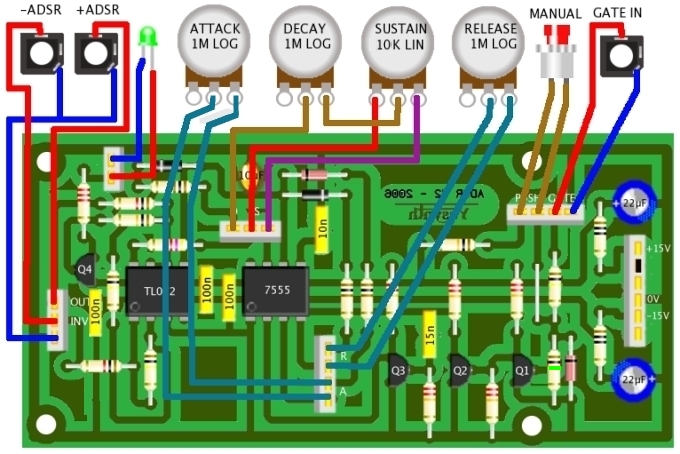| Update : jan. 31st, 2009 |
Envelope generator
ADSR |
 |
back to summary |
 |
 |
| Description |
| Update : jan. 31st, 2009 |
Envelope generator
ADSR |
 |
back to summary |
 |
 |
| Description |
|
 |
 |
Schematic |
 |
 |
| How does it work ? |
|
|
||
|
||
|
||
|
||
|
||
|
 |
 |
 |
 |
Components and building guide
|
|||||||||||||||||||||||||||||||||||||||||||||||||||||||||||||||||||||
|
|||||||||||||||||||||||||||||||||||||||||||||||||||||||||||||||||||||
| R3 is missing... |
|||||||||||||||||||||||||||||||||||||||||||||||||||||||||||||||||||||
| Wiring |
|||||||||||||||||||||||||||||||||||||||||||||||||||||||||||||||||||||
 |
 |
 |
 |
 |
Settings and trimming
|
| This circuit does not require any trimming. |
 |
 |
Références |
|
 |

 |
 |
| Name
: Czaba ZVEKAN Modular project : Location : Basel, Switzerland Website : |
Name
: Etaoin Modular project : Casia MS01 Location : Utrecht, Netherlands Website :www.casia.org/modular |
|
 |
  |
 |
| Name
: Jordi Pseudo : vcfool Modular project : Location : Website : |
Name
: Pseudo : Sebo Modular project : Location : Argentina Website : www.cosaquitosenglobo.com.ar |
Name
: Doug Slocum Pseudo : Modular project : SteamPunk Location : USA Website : www.dougslocum.com |
  |
 |
 |
| Name
: Frédéric Monti Pseudo : zarko Modular project : Location : Gardanne, France Website : |
Name
: Pseudo : Tudy Modular project : Yusynth 17U Location : Brno, Czech Republic Website :www.insania.freemusic.cz |
Name
:
Torsten Pseudo : fogman Modular project : schranzknecht Location : Germany Website : www.vulkanware.de/diy |
|
|||
 |
 |